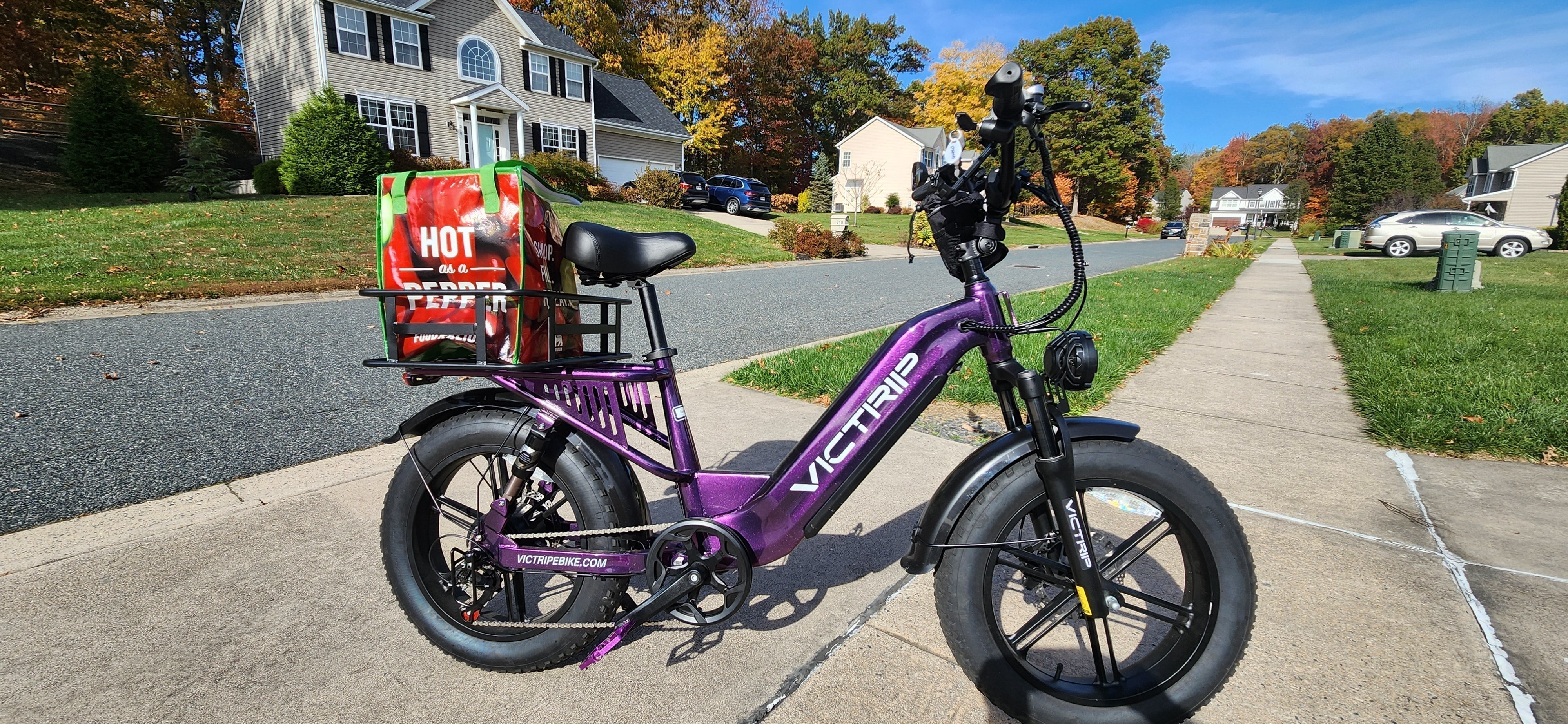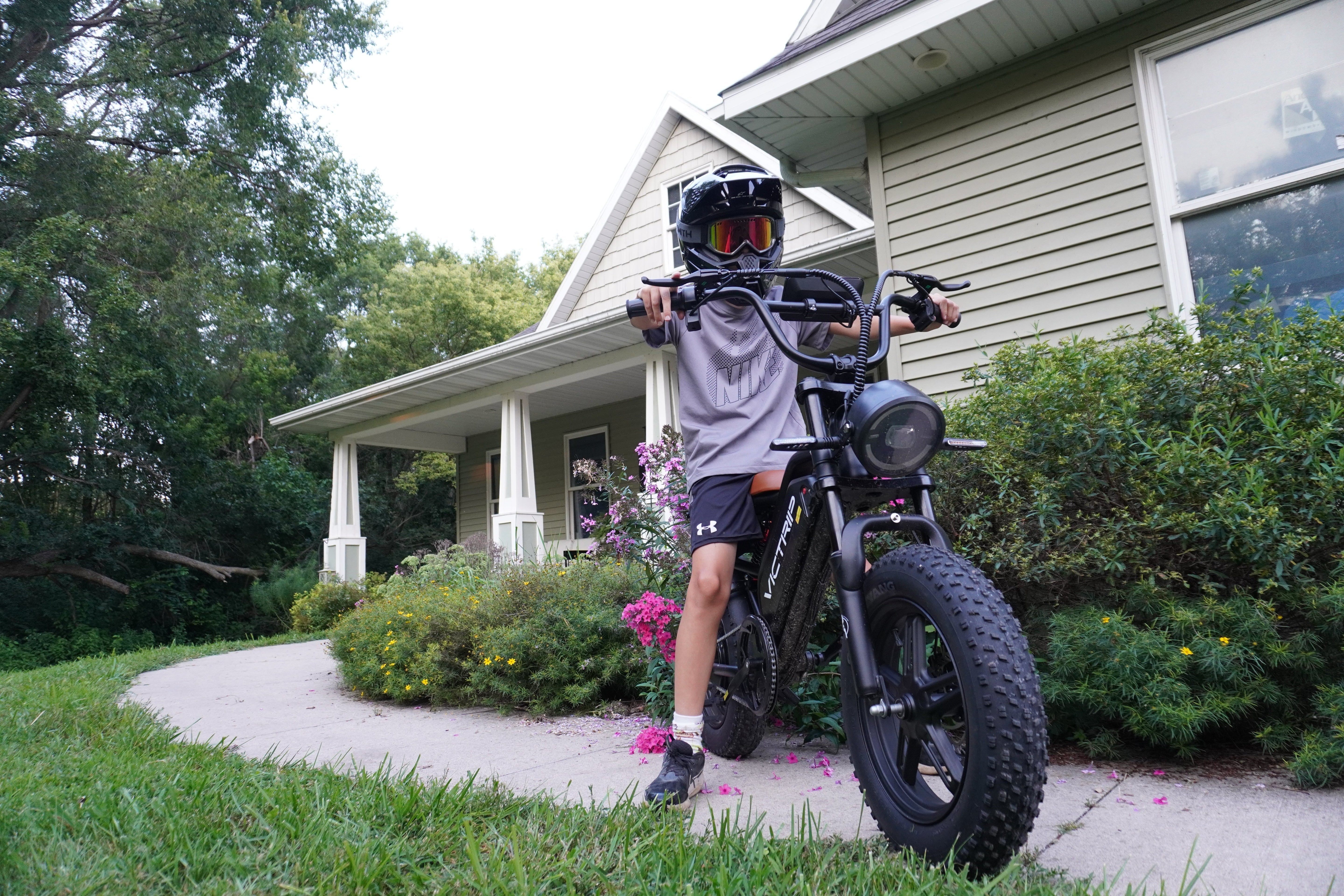
If you need compact storage, multimodal travel, and occasional urban trips, a folding electric trike will likely be the better choice. If you prioritize stability, load capacity, longer range, and comfort for daily commuting or cargo hauling, a full-size electric trike is usually superior. That said, there's no single answer — it depends on your needs, and we'll break it down so you can choose with confidence.
What is a folding electric trike?
A folding electric trike is a three-wheeled, battery-powered vehicle designed to collapse into a smaller footprint for storage or transport. It keeps the trike's basic stability but adds a hinge or two so you can fold it for trunking, apartment living, or bus/train travel.
Typical design and folding mechanisms
Most folding trikes use one or two main hinges:
-
Frame hinge near the mid-tube to fold the frame in half.
-
Foldable handlebars and quick-release seats for compactness.
-
Some models fold the rear axle or swing the rear basket inwards.
These mechanisms are built to be user-friendly; you should be able to fold or unfold in under a minute once you're practiced. They often use simplified suspension or none at all to keep weights and costs down.
Who benefits most from a folding trike
-
City dwellers with limited storage at home.
-
People who use public transport or car trunks for last-mile connections.
-
Occasional riders who want portability over full comfort or heavy-duty use.

What is a full-size electric trike?
A full-size electric trike is built around a rigid frame with full-size wheels, larger batteries, and more robust drivetrains. They resemble heavy-duty bikes more than “compact” foldables and prioritize ride quality, carrying capacity, and robust components.
Typical frame and drivetrain features
-
Rigid steel or aluminum frames with reinforced rear axles.
-
Larger battery packs (often 500Wh–1000Wh or more).
-
Stronger motors (250W–1000W+), sometimes mid-drive for hill climbing.
-
Better brakes (hydraulic disc) and more advanced gearing.
Who benefits most from a full-size trike
-
Daily commuters who need reliability and range.
-
Riders carrying cargo or passengers regularly.
-
People wanting long-term comfort, stability, and lower maintenance frequency.
Portability and storage comparison
Portability is the folding trike’s top advantage. If you live in an apartment, have to bring your trike inside, or want to combine it with a train or car trunk, folding models win hands-down.
Folding trike advantages
-
Compact folded size — fits in a closet or trunk.
-
Easier to put into elevators or inside small apartments.
-
Often lighter (though not always — folding steels can still be heavy).
Full-size trike advantages
-
No folding points to loosen or wear.
-
Larger cargo areas and racks remain intact.
-
Better balance and predictable geometry.
Practical note: folding mechanisms are great, but they add moving parts that may require occasional tightening or lubrication. If you’ll store the trike outside or on a balcony, a full-size trike’s simplicity may be preferable.
Performance, range, and battery considerations
Performance depends on motor power, battery capacity, and drivetrain efficiency.
Key factors to compare
-
Battery capacity (Wh): larger battery = longer range.
-
Motor power (W): higher wattage = better hill-climbing and acceleration.
-
Weight: folding trikes may be heavier per unit frame because of hinge hardware.
-
Aerodynamics and rolling resistance: wheel size affects efficiency; small wheels have higher rolling resistance.
Typical differences
-
Folding trikes often carry 250–500Wh batteries and smaller motors (250–500W). Expect 15–40 miles per charge depending on terrain and load.
-
Full-size trikes frequently feature 500–1000Wh batteries with 500–1000W motors; ranges of 25–60+ miles are realistic under moderate conditions.
If range is a must, prioritize battery capacity and efficient motor systems. If you need a lighter setup for carrying up stairs, folding models with removable batteries can help.
TOP PICK

VICTRIP® T1 Foldable Electric Tricycle
Comfort, ergonomics, and rider experience
Comfort is where full-size trikes usually shine.
Seating and ergonomics
-
Full-size frames allow more ergonomic seat positions, wider saddles, and better suspension (if equipped).
-
Folding trikes often compromise on seat height adjustability and suspension to save weight and bulk.
Ride stability
-
Full-size trikes usually have better weight distribution, larger wheels for obstacle roll-over, and stiffer frames for confident handling.
-
Folding trikes can feel skittish at higher speeds or with heavy rear loads if their hinge geometry isn’t well engineered.
Long-distance comfort
If you plan frequent longer rides, full-size trikes are more comfortable. If you're doing short trips under 10 miles, folding trikes can be perfectly comfortable.
Safety, stability, and legal considerations
Both trike types typically fall into the electric bicycle/tricycle legal category in many jurisdictions, which can affect where you can ride them and helmet/age rules.
Stability and braking
-
Full-size trikes often have superior braking systems and better stability at speed.
-
Folding trikes sometimes use simpler brakes; ensure you upgrade them if you plan heavier use or higher speeds.
Lights, reflectors, and signaling
Both styles should be equipped with proper lighting, reflectors, and possibly turn signals for urban commuting at night.
Local laws
Check local regulations — some places limit motor power and top speed for “e-bike” classification. If you exceed those, the vehicle may be classed differently and require registration or insurance.
Maintenance, durability, and total cost of ownership
Maintenance
-
Folding trikes: additional hinge points mean additional maintenance (periodic bolt checks, hinge lubrication).
-
Full-size trikes: fewer moving frame parts, often simpler long-term maintenance.
Durability
-
A high-quality folding trike can last many years but may need hinge servicing.
-
Full-size trikes with robust frames, good components, and corrosion protection often last longer with fewer surprises.
Cost of ownership
-
Folding trikes can be less expensive up-front if they use simpler components, but high-end folding models can be pricey.
-
Full-size trikes often cost more initially but give more capability for that price (battery, motor, load).
When tallying total cost, include insurance (if needed), battery replacements (every 2–6 years depending on use), tires, brake pads, and possible hinge repairs.
Use cases and buyer profiles: which trike suits which rider
-
Urban commuter with limited storage: Folding trike.
-
Rider who hauls groceries/cargo daily: Full-size trike.
-
Multi-modal traveler (car + train): Folding trike with removable battery.
-
Older riders wanting comfort & stability: Full-size trike with low step-through frame.
-
Recreational rider who wants occasional portability: Folding trike.
Accessories, upgrades, and customization options
Both platforms allow accessories—baskets, panniers, cargo trailers, lights, mirrors, and better brakes. Typical upgrades:
-
Larger battery or second battery pack (full-size often easier).
-
Hydraulic disc brakes for improved stopping.
-
Suspension seatposts or forks for comfort.
-
Cargo racks and weatherproof baskets.
If you plan heavy customization, full-size trikes generally provide more space and compatibility.
Real-world testing notes and quick checklist
When testing either type, try this quick checklist:
-
Fold/unfold (for folding models) — how long, how easy?
-
Ride at intended cruising speed — feel for stability.
-
Try carrying a loaded basket or pannier — observe handling.
-
Test hill climbing at full load.
-
Check braking under load.
-
Inspect hinge or frame for alignment and creaks.
-
Check battery removal and charging convenience.
If possible, try to test on routes similar to your daily use (city streets, bike lanes, short hills).
Pros and cons summary
| Aspect | Folding Electric Trike | Full-Size Electric Trike |
|---|---|---|
| Portability | Excellent | Poor to Moderate |
| Storage | Fits closets/trunks | Needs larger space |
| Range | Shorter (typically) | Longer (typically) |
| Comfort | Moderate | High |
| Maintenance points | More (hinges) | Fewer |
| Stability at speed | Lower | Higher |
| Cargo capacity | Lower | Higher |
| Price range | Wide (low to premium) | Often higher baseline |
Conclusion and clear recommendation
Folding vs. Full-Size Electric Trike: Which is Better? — the short answer is: it depends on your priorities.
-
Choose a folding electric trike if portability, mixed-mode travel, and compact storage are your top needs. They're perfect for urban residents who combine bikes with public transit or need to store their trike indoors.
-
Choose a full-size electric trike if you prioritize comfort, range, cargo capacity, and long-term durability. They're better for daily commuters, cargo-haulers, and riders seeking superior ride quality.
If you’re still undecided, list your top three needs (e.g., “store indoors,” “carry 50 lbs,” “ride 10+ miles daily”), then match them to the features above. That simple exercise will almost always point you to the right trike.
For more general information about electric tricycles and regulations, see this overview on electric mobility basics (e.g., Wikipedia’s electric bicycle page).
FAQs
Are folding electric trikes less safe than full-size trikes?
Not necessarily. Both can be safe if built well and used within design limits. Folding trikes may require extra attention to hinge integrity and may feel less stable at higher speeds. Choose reputable brands, inspect fasteners regularly, and match the trike to your intended use.
Can I fit a folding trike in my car trunk?
Many models fold small enough to fit into medium-to-large car trunks, but confirm folded dimensions and try a physical fit when possible.
How far will an electric trike go on a single charge?
Range varies widely. Expect 15–40 miles for many folding models and 25–60+ miles for many full-size trikes, depending on battery size, rider weight, terrain, and assist level.
Do electric trikes require special licenses or registration?
It depends on local laws. Low-power trikes that meet e-bike classifications often do not need registration in many places. Higher-power models could be classified differently and may need registration, insurance, or a license.
Which trike is better for carrying groceries or cargo?
Full-size electric trikes typically offer better cargo capacity and stability when loaded. They often support heavier racks and trailers.




Share:
Cool Electric Bikes for Teens Who Love Style
Comfort Meets Style: Choosing the Right Electric Cycle for Woman